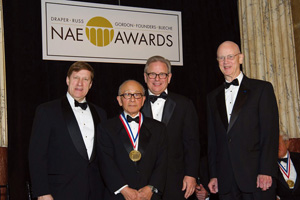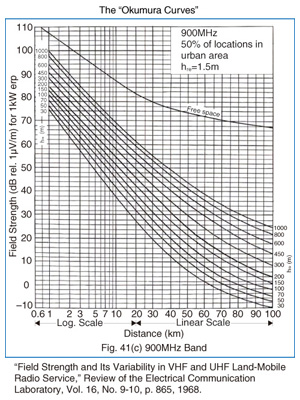 |
|||
|
|
|||
|
Information Dr. Yoshihisa Okumura, a former leader of the mobile radio laboratory of Nippon Telegraph and Telephone Public Corporation, receives the Charles Stark Draper Prize from the National Academy of EngineeringDr. Yoshihisa Okumura (a former leader of the mobile radio laboratory of Nippon Telegraph and Telephone Public Corporation (now NTT) and presently Professor Emeritus at Kanazawa Institute of Technology), received the 2013 Charles Stark Draper Prize [1] from the National Academy of Engineering, a private, nonprofit research institution in the United States, on February 19, 2013 (U.S. time), for “pioneering contributions to the world’s first automobile (cellular) telephone networks, systems and standards.” He is the first Japanese researcher to win this award.
The Charles Stark Draper Prize is awarded by the National Academy of Engineering to individuals who have made outstanding contributions to the advancement of engineering. It is sometimes called the Nobel Prize of engineering. During his time at the Electrical Communications Laboratory of Nippon Telegraph and Telephone Public Corporation, Dr. Okumura made significant contributions to explaining radio propagation characteristics in mobile communications and conceived of a new system that would lead to genuine automobile telephone services in the 800-MHz band (urban mobile communications system). This work laid the foundation for future automobile cellular telephone networks and systems. To help explain radio propagation characteristics, Dr. Okumura performed extensive outdoor transmission and reception experiments in diverse environments over a wide range of frequency bands from VHF (very high frequency) to UHF (ultrahigh frequency), and used the data obtained from these field experiments to establish in 1968 a technique for estimating received-field-strength curves in the range of 1–100 km and determining service areas. These field-strength curves received much praise for their usefulness and came to be adopted as a recommendation of Comité Consultatif Internationale des Radiocommunications (CCIR) of the International Telecommunication Union (ITU). Called the “Okumura Curves,” they are still used today in the construction of various types of mobile radio systems throughout the world. For example, a propagation estimation formula based on the Okumura Curves is used in the link budget analysis of modern mobile telephone systems, and techniques introduced by Dr. Okumura for analyzing data from field experiments are used on a daily basis for inspecting and optimizing QoS (quality of service).
Reference
|
|||










